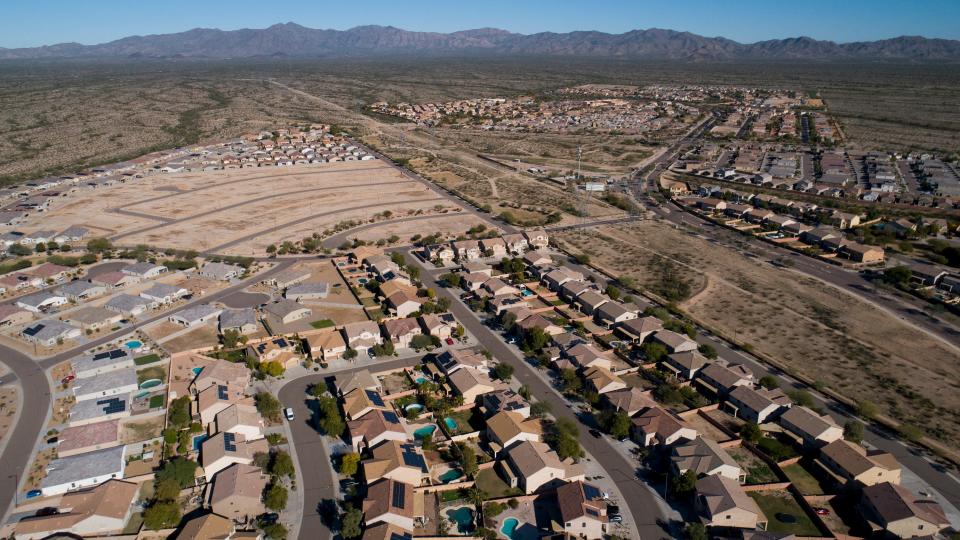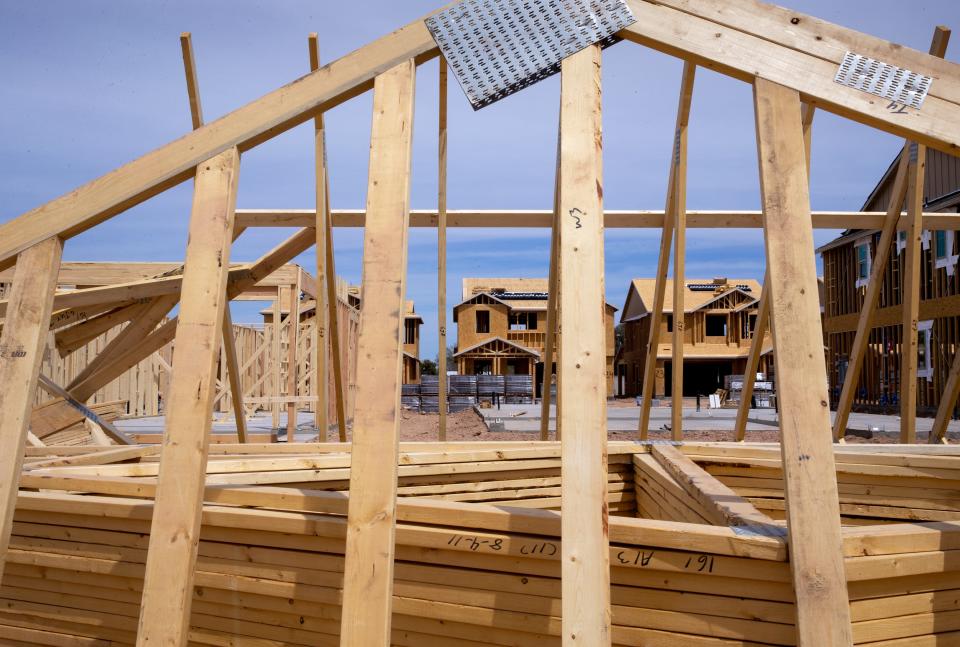Why it's nearly impossible to build a home in metro Phoenix that most of us can afford
It’s nearly impossible these days to build a single-family home in metro Phoenix for under $400,000.
And that’s a problem, considering that the average resident doesn’t make enough to afford a $400,000 home.
If this is the new normal — and every homebuilder and housing affordability researcher I spoke with says it could be — that has major implications.
Not only for future economic growth, but also for the longstanding image that metro Phoenix has presented to the world.
Our housing problems began years ago

As recently as 2020, two-thirds of metro Phoenix homes sold were considered affordable for the average resident (meaning, the mortgage was less than 30% of their income).
Now, less than a third fit that definition, placing us among the least affordable major cities in the nation for housing.
But the factors driving up costs began to emerge as far back as the Great Recession, as the pace of home construction slowed; neighbors increasingly fought denser, more affordable projects; and speculators scooped up many available homes with cash.
For years, we weren’t adding enough homes to keep pace with population growth.
The pandemic only amplified these problems. Supply chains were interrupted. The price of building materials went through the roof.
Then inflation set in. And while the cost of lumber and other materials has since moderated, the price of labor to build homes remains high, thanks to a persistent construction worker shortage.
New homes are shouldering the demand

Meanwhile, high mortgage rates are keeping more people in their homes, drying up the resale market.
Which, in turn, has forced an even larger chunk of the area’s housing demand onto new construction.
Estimates vary on how many new homes are needed to satisfy this pent-up demand, though a commonly used figure for Maricopa County is about 50,000.
For perspective, that’s roughly the number of housing units in Surprise, a West Valley suburb of roughly 150,000 people.
The Common Sense Institute estimates that at current permitting rates, it would take more than 6 years to fill that large of an imbalance.
And that’s if current permitting rates can be maintained, which is certainly an open question.
We're running out of room to grow
That’s because for years, we kept costs in check by growing out, building one giant master-planned community after the next.
But we’re bumping up against the Valley’s edges.
Land is growing more expensive, even on the outskirts, because there is less of it left to develop.
Meanwhile, nearly all the area’s groundwater is now spoken for, requiring developers to either find renewable sources or be served by a water provider that has them.
Those costs haven’t hit construction yet, particularly in the West Valley where most of the remaining large parcels remain, because most everything now in the works was approved under the old rules.
But when they do, the areas where homebuilding was once the cheapest will be hit the hardest.
Metro Phoenix will look a lot different
These new realities will resonate across metro Phoenix, which is known for single-family, for-sale homes stretching as far as the eye can see.
Most experts I spoke with believe that traditional subdivisions with tile roofs and block walls will continue to materialize, albeit in far more limited areas.
But they also agree that built-out communities will have to shoulder more of the housing demand — meaning we will have to grow up a lot more now than we grow out.
That includes building more high-rise condos and apartments. But also the middle-density, for-sale housing we’re missing, such as townhomes, duplexes and patio homes.
Which could make our cities — particularly the suburbs that developed around sprawling, car-centric subdivisions — look and feel a lot different than they do now.
And that makes a lot of residents nervous.
There is no silver bullet for affordability
Here’s the thing, though: We all have an interest in lowering the cost of homes.
Having homes that most of us can afford is an integral leg on metro Phoenix’s economic stool. Kick it out, and everything else — from job creation to quality of life for residents who already own their homes — goes wobbly.
There’s been a lot of talk this legislative session about lowering development costs.
The experts I spoke with agree that Arizona should mandate more flexibility in municipal zoning codes and shorter review periods from cities, particularly because time is money and those costs also get passed on to homebuyers.
But given that there are so many local and national factors working together to drive up housing costs, they also agree that those fixes alone won’t solve the problem.
There will be no silver bullet, no one-and-done effort that can make metro Phoenix more affordable again.
It’s best for all of us if we find new ways to grow affordably and sustainably, and not trade one for the other.
But no matter how we move forward — or even if we foolishly decide to stop growing all together — this place will probably look at lot different a decade from now.
Reach Allhands at joanna.allhands@arizonarepublic.com. On X, formerly Twitter: @joannaallhands.
If you love this content (or love to hate it – hey, I won't judge), why not subscribe to get more?
This article originally appeared on Arizona Republic: Phoenix homes aren't so affordable. Why this is likely the new normal

